[Editor’s Note: Mad Scientist Laboratory is pleased to feature today’s post by 1LT Carlin Keally, whose submission was one of the semi-finalists in our Mad Scientist Writing Contest on the 4C’s: Competition, Crisis, Conflict, and Change. 1LT 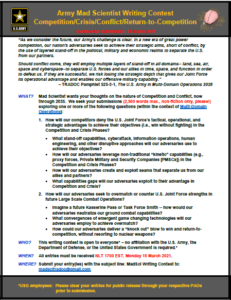 Keally’s entry addressed the first of our contest’s writing prompts:
Keally’s entry addressed the first of our contest’s writing prompts:
How will our competitors deny the U.S. Joint Force’s tactical, operational, and strategic advantages to achieve their objectives (i.e., win without fighting) in the Competition and Crisis Phases?
Our adversaries have identified seams across American society and are ready to exploit them. The deluge of social media over the past two decades has provided them with vast amounts of personalized data from which to profile behaviors and vulnerabilities and to target individuals. “Informational, economic, and social warfare are our next battlefields; the Soldiers of the enemy are American citizens. Data harvesting, digital blackmail, behavioral manipulation, misinformation, microtargeting, and tribalizing are our enemy’s weapons in the next war.” Read on!]
“A great civilization is not conquered from without until it has destroyed itself from within.” Ariel Durant

American foreign adversaries understand our mass, our creativity, our adaptability. The last century has witnessed continuous American conflict, and our antagonists have observed our strengths and weaknesses. Our greatest triumphs are born of a united homeland, our failures, likewise, from domestic disunion and strife. Those players who would see the American empire fall have observed, analyzed, and understood: the only way to crush America is to turn it against itself from within.
In the next war, boots on the ground will be tangential. The next war will take place within the minds of our Soldiers and our citizens. Disinformation will be the weapon, reality the battlefield. Microtargeting — manipulating individuals based on data driven behavioral insights — is the next weapon of mass destruction aimed at the United States. Cognitive domain warfare based on data harvesting, algorithm manipulation, disregarding the truth, and exacerbating internal social divides could cripple America before we can even  put one pair of boots on the ground in our next war. A house divided cannot stand; they will come for us where we think, where we live, where we fight each other.
put one pair of boots on the ground in our next war. A house divided cannot stand; they will come for us where we think, where we live, where we fight each other.
Every year, all service members are required to certify in operational security, to include identifying indicators on “insider threats.” An insider threat is considered a threat that an employee or contractor will use his or her authorized access, wittingly or unwittingly, to do harm to the security of the United States. This concept is not new; blackmail and manipulation are well-worn methods of adversaries looking for information advantages.
What happens if Soldiers remain unware that each of their decisions, their likes, their behavior, are valuable pieces of information? Further, what if it is their “human experience,” their “behavioral data”1 that is in fact offering our adversaries insight into US military operations?

In 2018, the world discovered that Cambridge Analytica had acquired the personal data of up to 87 million Facebook users without their explicit consent. Analysis of these data sets allowed the company to create psychological profiles of humans, whom they could then manipulate based on statistical variables introduced to their created models. Soldiers have social media; the logical conclusion is that the enemy is collecting our data to gain an advantage in a future fight. Should American adversaries begin to gather, analyze, and manipulate a Soldier’s open source (OSINT) behavioral data, the operational impacts could be severe.
Beyond blackmail, which is often postured as one of the more insidious motivators of insider threats, pure behavioral manipulation is now a viable option for American enemies. Dr. Jessica Dawson, Assistant Professor and Research Scientist at the Army Cyber Institute, in her article “Microtargeting as Information Warfare,” asks readers to “consider if China is successful in convincing key US military officers that it poses no threat in the Pacific, leading to changes in the force posture that work in China’s benefit.” If the psychological profile of a Soldier (again, based on open source data) is assessed to be prone to questioning orders, sympathetic to the cause of the enemy, the enemy could employ an informational variable aimed at turning a Soldier against his cause, unit, or nation. This is already happening. ISIS, Proud Boys, and the Oath Keepers, to name a few, have successfully exercised specific  informational campaigns to draw their followers into their worldviews. It is not illogical to think that Russia, China, and other near peer rivals could do this in either a targeted sense of important decision-makers or to scale in the citizenry.
informational campaigns to draw their followers into their worldviews. It is not illogical to think that Russia, China, and other near peer rivals could do this in either a targeted sense of important decision-makers or to scale in the citizenry.
Digital privacy, the safeguarding of personal data on open source sites, is the first erection of defenses needed for the new wars. If we do not protect our Soldiers’ (and our civilians’) behavioral raw material, America opens itself to mass manipulation, to waging war not necessarily on a traditional battlefield, but rather within the actions and reactions of average Americans.
Microtargeting: “Medicating” Mass Behavior and the War on Trust
Like any good seasonal metaphor, after the harvesting comes the sowing. From data comes order, and the potential for chaos. Data reveals people’s attachments, their values, their tendencies;2 weaponizing variables to manipulate behavior based on these data sets is known as “microtargeting.”
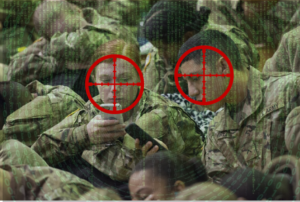 Analyzing patterns from data allows our enemies to effectively “medicate mass behavior.”3 Applying informational algorithms, affecting and influencing what certain people see can destabilize the American citizen’s relationship with their institutions, with their Government, with the very concept of truth itself. This is intended to destabilize our democracy, the institutions, and the checks and balances that serve to protect it.
Analyzing patterns from data allows our enemies to effectively “medicate mass behavior.”3 Applying informational algorithms, affecting and influencing what certain people see can destabilize the American citizen’s relationship with their institutions, with their Government, with the very concept of truth itself. This is intended to destabilize our democracy, the institutions, and the checks and balances that serve to protect it.
This is not a new concept; information warfare and psychological operations are as old as war itself. As defined in Joint Publication 3-13.2, Military Information Support Operations, information warfare is “planned operations to convey selected information indicators to foreign audiences to influence their emotions, motives, objective reasoning, and ultimately the behavior of foreign governments, organizations, groups, and individuals in a manner favorable to the originator’s objectives.” It’s a question of triggering a loss of confidence in those who are supposed to lead the country and protect its citizens.
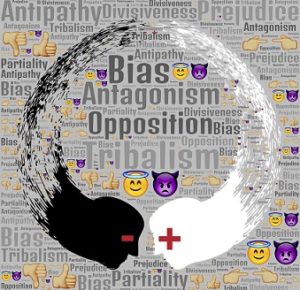 There are a few different ways that microtargeting will be a weapon of mass destruction in the next conflict. Understanding American socio-political rifts, foreign adversaries could capitalize on the American citizen’s distrust in their neighbor by further tribalizing the country. For groups who tend towards identity politics, consuming specific propaganda that dehumanizes their fellow countrymen can catalyze violence.
There are a few different ways that microtargeting will be a weapon of mass destruction in the next conflict. Understanding American socio-political rifts, foreign adversaries could capitalize on the American citizen’s distrust in their neighbor by further tribalizing the country. For groups who tend towards identity politics, consuming specific propaganda that dehumanizes their fellow countrymen can catalyze violence.
A secondary effect is exacerbating sympathy events. Consider Dr. Dawson’s hypothetical regarding a US officer changing military posture to benefit China. Not only does this advantage our enemy, it also creates a propaganda opportunity; publicizing this action undermines the legitimacy of US decision-making. In the foreign policy realm, much of American power rests on the civilian trust in the choices and strategy of our experts. Sympathy events and their ensuing advertisement begin to dissolve the trust between those who are not foreign policy subject matter experts, and those who are supposed to be considered thus.
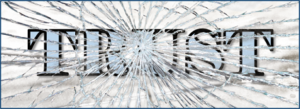 Further, as the events compound and trust disintegrates, the more informational ammunition our enemies have to target people with anti-institutional behavioral profiles. Without defenses against truth targeting, America remains open to a homefront attack against our own hearts and minds, designed to sow misinformation and distrust.
Further, as the events compound and trust disintegrates, the more informational ammunition our enemies have to target people with anti-institutional behavioral profiles. Without defenses against truth targeting, America remains open to a homefront attack against our own hearts and minds, designed to sow misinformation and distrust.
Within the military specifically, the war on trust has operational impacts. Consider a Soldier who has been enemy-educated to believe the US should  not have a presence in a certain place, and he is then deployed there. What happens if a Soldier believes he cannot trust who is sending him to war? What happens if a politician has seen images and videos of American Soldiers not doing their jobs, dismissing their authorities, badmouthing their superiors? What happens if American leadership feels they cannot trust those they send to war to effectively prosecute it? If leaders cannot trust their subordinates and vice versa, a war is lost before it’s even considered.
not have a presence in a certain place, and he is then deployed there. What happens if a Soldier believes he cannot trust who is sending him to war? What happens if a politician has seen images and videos of American Soldiers not doing their jobs, dismissing their authorities, badmouthing their superiors? What happens if American leadership feels they cannot trust those they send to war to effectively prosecute it? If leaders cannot trust their subordinates and vice versa, a war is lost before it’s even considered.
Lastly, consider American individuals who perpetuate our way of life: bankers, water maintenance technicians, network servicemen, and the like. These individuals are present online, on social media, offering their data on open sources. Once profiled, these individuals can be behaviorally targeted to change affect their spheres. This warfront is economic. Disrupting normal processes draws attention to domestic issues, further erasing the US presence around the world. If a US citizen is conditioned to believe her actions are not only bettering her country, but also disempowering her nation’s enemies, she will be inclined to act accordingly; America’s economy powers her wars. If our economy begins to stumble because citizens are convinced their actions are righteous, America’s enemies would not need to expend any conventional warfighting to inflict casualties. Americans would be disrupting America.

Malevolent Algorithms: Info loops and the war on reality
One of the US military’s greatest strengths is the ability to create cohesive units from diverse Americans. Before the advent of social media, recruits would attend basic, lose superfluous individualism, and learn to be a Soldier, Marine, Airman, or Sailor. From the 1980s onward, everyone wore the suit,  everyone lived by the “Army” values, and everyone grew into the unit, not away from each other. After the disunion during and following the Vietnam war, social indoctrination allowed the culture of the military to become more tribal; being a Soldier offered its own identity. Part of this cultural decline is the constant access Soldiers have to previous value systems, communities, and information sources. Often, Soldiers who hail from a troubled adolescence find success in the Army when they are posted far from their hometown and these defining environments. Social media no longer allows for a fresh start and a clean character development. Instead of coalescing into a national fighting force, the pervasive access of social media has allowed networks of like-minded people
everyone lived by the “Army” values, and everyone grew into the unit, not away from each other. After the disunion during and following the Vietnam war, social indoctrination allowed the culture of the military to become more tribal; being a Soldier offered its own identity. Part of this cultural decline is the constant access Soldiers have to previous value systems, communities, and information sources. Often, Soldiers who hail from a troubled adolescence find success in the Army when they are posted far from their hometown and these defining environments. Social media no longer allows for a fresh start and a clean character development. Instead of coalescing into a national fighting force, the pervasive access of social media has allowed networks of like-minded people  (Soldiers included) to maintain connections, valuing and elevating racial, gender, or political identities to trump, and thus weaken, national identity. This is not just an issue within our formation; recognizing a national identity within our diverse citizenry (many of whom find issue with said diversity) has challenged our coalition as a people. Rifts beget rifts, and such schisms are only exacerbated by distrust in our information streams. Our enemies can harness this.
(Soldiers included) to maintain connections, valuing and elevating racial, gender, or political identities to trump, and thus weaken, national identity. This is not just an issue within our formation; recognizing a national identity within our diverse citizenry (many of whom find issue with said diversity) has challenged our coalition as a people. Rifts beget rifts, and such schisms are only exacerbated by distrust in our information streams. Our enemies can harness this.
For the moment and the foreseeable future, the United States operates on a goodwill blindspot based on accepted exceptionalism and our freedoms; enemies understand that American leadership is unwilling or unable to inhibit abusive algorithms designed to pull individuals into the depths of misinformation loops. As such, adversaries who have a grasp of American social divisions need only fan the embers that warm identity politics. Understanding gaps in our informational landscape and the real-life implications of propagating falsities is our only way forward. The threat from this front is two pronged: Soldiers and civilians.
 Soldiers have access to informational sources. Just a month ago, a Fort Stewart Soldier was charged in an FBI sting for allegedly trying to help an “ISIS operative” blow up New York’s 9/11 memorial. Similarly, according to an Associated Press story, GEN Daniel R. Hokanson, Chief, National Guard Bureau, said two National Guard Soldiers were removed from inauguration duty in January due to their inappropriate comments or texts related to the inauguration. Consider this at scale; if our near peer adversaries have a grasp on who our Soldiers are, they have harvested their data, can assess what will drive them to distrust the Government, and are willing to radicalize them with misinformation — this is not only an undeployable force, this is the foundation of a military coup.
Soldiers have access to informational sources. Just a month ago, a Fort Stewart Soldier was charged in an FBI sting for allegedly trying to help an “ISIS operative” blow up New York’s 9/11 memorial. Similarly, according to an Associated Press story, GEN Daniel R. Hokanson, Chief, National Guard Bureau, said two National Guard Soldiers were removed from inauguration duty in January due to their inappropriate comments or texts related to the inauguration. Consider this at scale; if our near peer adversaries have a grasp on who our Soldiers are, they have harvested their data, can assess what will drive them to distrust the Government, and are willing to radicalize them with misinformation — this is not only an undeployable force, this is the foundation of a military coup.
Civilians are also targets of misinformation campaigns. During the protests in the spring of 2020, some called for the deployment of active duty troops in the streets of American cities to quell violence and rioting. During this administration’s inauguration, there were 25,000 National Guard troops  deployed in our Capitol to protect the peaceful transfer of power. It is worth asking the question, what happens if there are civilian protests, riots, and uprisings based on disinformation diffused and disseminated by foreign enemies that are too widespread and numerous for simply the National Guard to handle? Are active duty troops deployed? This too sets a dangerous precipice for military power, destined to be discussed and made precedent in Washington. Caught up at home, our forces would not challenge near peer adversaries anywhere else in the world. They would have won a bloodless war, simply by understanding and exploiting domestic rifts through malignant information environments.
deployed in our Capitol to protect the peaceful transfer of power. It is worth asking the question, what happens if there are civilian protests, riots, and uprisings based on disinformation diffused and disseminated by foreign enemies that are too widespread and numerous for simply the National Guard to handle? Are active duty troops deployed? This too sets a dangerous precipice for military power, destined to be discussed and made precedent in Washington. Caught up at home, our forces would not challenge near peer adversaries anywhere else in the world. They would have won a bloodless war, simply by understanding and exploiting domestic rifts through malignant information environments.
 Our foreign adversaries understand our national identity (or lack thereof) and our weaknesses better than we do, or better than we are willing to admit. Understanding our informational landscape will allow us to erect intellectual firewalls to protect our educationally disadvantaged from informational loops designed to sow violence against
Our foreign adversaries understand our national identity (or lack thereof) and our weaknesses better than we do, or better than we are willing to admit. Understanding our informational landscape will allow us to erect intellectual firewalls to protect our educationally disadvantaged from informational loops designed to sow violence against 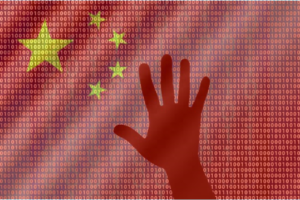 institutions. Right now, our adversaries manipulate our relationship with the truth; until we can effectively combat our war on reality at home, we will have no chance of winning a conventional war; all they need is a baseless accusation born out of fear, playing on our expectations of each other.
institutions. Right now, our adversaries manipulate our relationship with the truth; until we can effectively combat our war on reality at home, we will have no chance of winning a conventional war; all they need is a baseless accusation born out of fear, playing on our expectations of each other.
Conclusion
Durant’s assertion is above all a prophecy. Our enemies understand our weaknesses and how to exploit them. Our open source information offers foreign adversaries nearly unlimited data from which to profile behaviors and target individuals. Propagating misinformation and specific truths foments distrust, disunity, and instability. Informational, economic, and social warfare are our next battlefields; the Soldiers of the enemy are American citizens. Data harvesting, digital blackmail, behavioral manipulation, misinformation, microtargeting, and tribalizing are our enemy’s weapons in the next war. This is a war without uniform, without clarity, without rules of engagement. It is a conflict fostered between institutions and individuals, between neighbors and between citizens. Against an America united in a respect for veracity, no enemy can prevail from without; against an American that rots from within, we are lost. A divided house cannot stand. A divided America is no longer a threat; a divided America is no longer an adversary. If we offer our human experience as bullets to our enemy, we have lost before we have even begun.
If you enjoyed this post, check out the following content:
Weaponized Information: What We’ve Learned So Far…, Insights from the Mad Scientist Weaponized Information Series of Virtual Events and all of the series’ associated content and videos [access via a non-DoD network]
Weaponized Information: One Possible Vignette and Three Best Information Warfare Vignettes
The Information Environment: Competition and Conflict anthology
The Convergence: Political Tribalism and Cultural Disinformation with Samantha North and the associated podcast
The Erosion of National Will – Implications for the Future Strategist, by Dr. Nick Marsella
Sub-threshold Maneuver and the Flanking of U.S. National Security, by Dr. Russell Glenn
The Convergence: Hybrid Threats and Liminal Warfare with Dr. David Kilcullen and listen to the associated podcast
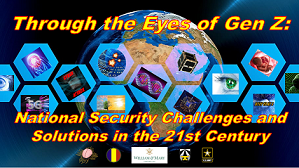 >>>REMINDER 1: Mad Scientist’s next virtual event — Through the Eyes of Gen Z: National Security Challenges and Solutions in the 21st Century — is on Thursday, 29 April 2021 (starting at 1300 EDT). Join us as we collaborate again with The College of William and Mary’s Project on International Peace and Security (PIPS) Program to broaden our aperture on the Operational Environment (OE). We will host two moderated discussion panels where PIPS Research fellows discuss the ramifications of their respective research topics on the OE and the changing character of competition, conflict, and U.S. strategy.
>>>REMINDER 1: Mad Scientist’s next virtual event — Through the Eyes of Gen Z: National Security Challenges and Solutions in the 21st Century — is on Thursday, 29 April 2021 (starting at 1300 EDT). Join us as we collaborate again with The College of William and Mary’s Project on International Peace and Security (PIPS) Program to broaden our aperture on the Operational Environment (OE). We will host two moderated discussion panels where PIPS Research fellows discuss the ramifications of their respective research topics on the OE and the changing character of competition, conflict, and U.S. strategy.
Check out the event flyer here, then register here now [via a non-DoD network] to participate in this informative event.
In the meantime, check out what we learned from last year’s event in GEN Z and the OE: 2020 Final Findings to whet your appetite for our upcoming event!
 >>>REMINDER 2: Young Minds on Competition and Conflict, the next webinar in our continuing series of Are We Doing Enough, Fast Enough? virtual events – explores our adversaries’ views on Competition, Crisis, Conflict, and Change on Thursday, 6 May 2021 (starting at 1000 EDT). Join our panel of prominent young minds from the national security arena as they share their ideas about the future of competition and conflict for the next decade. Register here now [via a non-DoD network] to participate in this informative event.
>>>REMINDER 2: Young Minds on Competition and Conflict, the next webinar in our continuing series of Are We Doing Enough, Fast Enough? virtual events – explores our adversaries’ views on Competition, Crisis, Conflict, and Change on Thursday, 6 May 2021 (starting at 1000 EDT). Join our panel of prominent young minds from the national security arena as they share their ideas about the future of competition and conflict for the next decade. Register here now [via a non-DoD network] to participate in this informative event.
About the Author: An active duty Armor Officer, 1LT Carlin Keally currently serves as the Aide-de-Camp of the Deputy Commanding General of Readiness of the 3rd Infantry Division at Fort Stewart, Georgia. She completed her Platoon Leader time on tanks in 3-69 AR, also in 3ID.
Disclaimer: The views expressed in this blog post do not necessarily reflect those of the Department of Defense, Department of the Army, Army Futures Command (AFC), or Training and Doctrine Command (TRADOC).
1 Christopher Wylie, Mindf*ck: Cambridge Analytica and the Plot to Break America (New York: Random House, 2019)
2 Zuboff, The Age of Surveillance Capitalism, 20.
3 The Age of Surveillance Capitalism: The Fight for a Human Future at the New Frontier of Power, 1st edition (PublicAffairs, 2019), 8.



